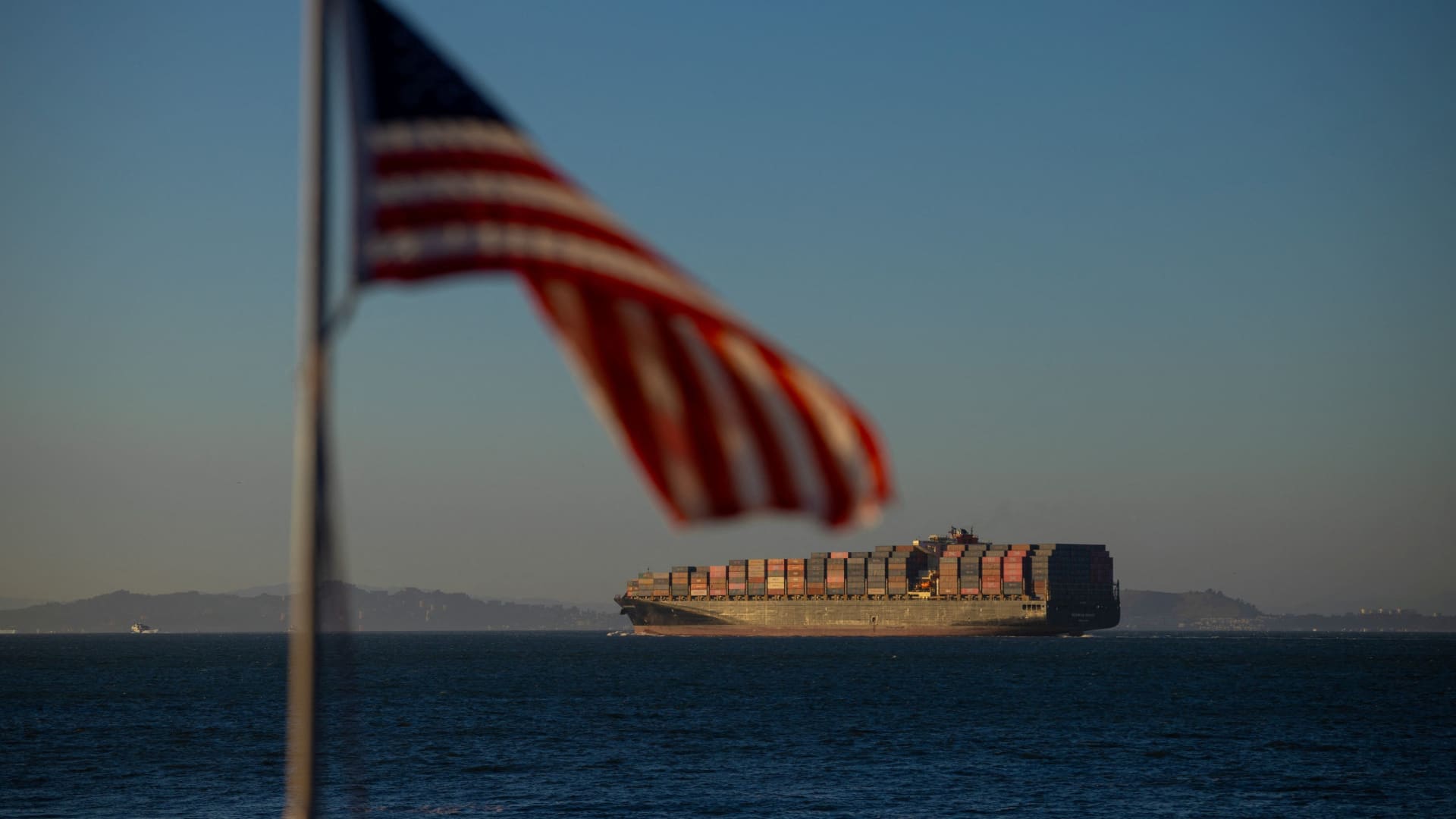A cargo ship full of shipping containers departs the port of Oakland at the San Francisco Bay, California, U.S., August 4, 2025.
Carlos Barria | Cb
With both the producer price index and the consumer price index still showing accelerations, consumers may be wondering why the price of goods across the board isn’t increasing more.
But logistics experts are warning that those higher prices are currently hiding in “the middle mile,” otherwise known as warehouses and distribution centers, and are yet to come.
The Trump administration‘s back-and-forth on tariffs has had U.S. importers scrambling to pull forward their freight to mitigate those rates, with that inventory now sitting in warehouses.
Zachary Rogers, lead author of the Logistics Managers’ Index and assistant professor of supply chain management at Colorado State University, explained during the Port of Los Angeles July news update that the increase in inventory is the reason why price increases related to the tariffs have not been seen across the board.
“We are seeing price increases right now in back-to-school kids’ apparel, toys, and things like that,” said Rogers. “But consumers haven’t seen the really big impact of any inflation yet because it is sitting in the middle mile (warehouses). I would expect that we will see inventories move down in September.”
Rogers said retailer inventories generally peak in the middle of October, but with the front-loading this year, warehouse capacity has moderately expanded as well as prices.
“Essentially, what this is telling us is peak season is happening in sort of a bifurcated way,” said Rogers.

Mike Short, president of global forwarding at C.H. Robinson, told CNBC that peak season items, which will make their way onto store shelves for the holidays, were pushed two to three months earlier this year and are being stored. Comparing this peak season to last year, however, volumes are not as strong.
“We’ve seen customers that are actually having to bring that inventory into their own distribution centers, and they’re actually having to have to carry that cost,” said Short. “But whether that (warehouse costs) gets passed on to the end consumer or not, is really spread across the board, and that also goes with tariffs, carrying costs. It’s really across the board on what our customers are deciding to do.”
Short said they are having active conversations with clients on how to manage their inventory and bring in their freight in a timely and efficient manner.
“We’ve seen with our customers is, instead of the supply chain expense being a line item in their P and L (profit and loss statement), it’s becoming a boardroom C-level conversation,” said Short.
The pulling forward of freight may have been a mitigation tool to avoid higher tariffs, but warehouse space has gotten tighter as a result, which has also increased prices..
Karl Siebrecht, CEO of flexible warehouse firm Flexe, said that across the company’s enterprise and mid-market customers, they are seeing increased demand for flexible warehousing from some importers and distributors to buffer their Q4 inventory.
“They brought in earlier than typical to get ahead of tariffs,” he said. “At the same time, many retailers’ inventory levels are softer due to continued uncertainty around tariffs and consumer confidence more broadly.”
Siebrecht said that inventories leaving warehouses will start to hit in September and October, which will go to retailers’ distribution centers.
“This inventory then starts flowing outbound in later Oct and early Nov in time to stock retail shelves and fill up ecommerce fulfillment centers for Black Friday, said Siebrecht. ” Replenishment to retail stores and FCs continues through mid December.”
That buildup of inventory is being reflected in activity at the U.S.’s busiest ports. Gene Seroka, executive director for the Port of Los Angeles, said that as of now, the number of vessels calling the port for the month of August is “really solid”.
“It is less than July, and less than what we witnessed last August,” said Seroka, “But that is due to a buildup of inventory. So not a loser of a month, but really, I think we’re going to start to see the product dwindle, just simply because of all the inventory that’s in the country.”
The ever-changing landscape of tariffs has also impacted supply chains. Vietnam, a winner in the China-plus-one manufacturing strategy, is now facing a 30% transloading fee. Short says this fee, along with the latest 50% tariff on India, shows just how dynamic the situation is for companies, especially as China finds new places to ship its products.
“We’re seeing freight going more from China to Europe,” said Short. “We’re seeing freight going more into Mexico. We’re seeing freight go into Southeast Asia, or originating from Southeast Asia. But honestly, up until this point, our volumes into the U.S., out of all of Asia, have remained fairly steady and and who knows what the future holds, but it has not been as devastating as once people would have thought at the beginning of when tariffs started to be the topic of conversation.”
It’s unclear how consumers will react once if this supply chain situation results in higher priced items.
Peter Boockvar, Bleakley Advisory Group CIO, said that consumers still have PTSD from the 2021 and 2022 spike in prices, and that is one reason why overall consumer confidence “is well below its pre-Covid levels.”
“There is no patience for further increases in their cost of living and people don’t care if tariffs are a possible one-time step up in price or not. To them, it’s another inflationary pain point with more tariff hits to come,” he said.





